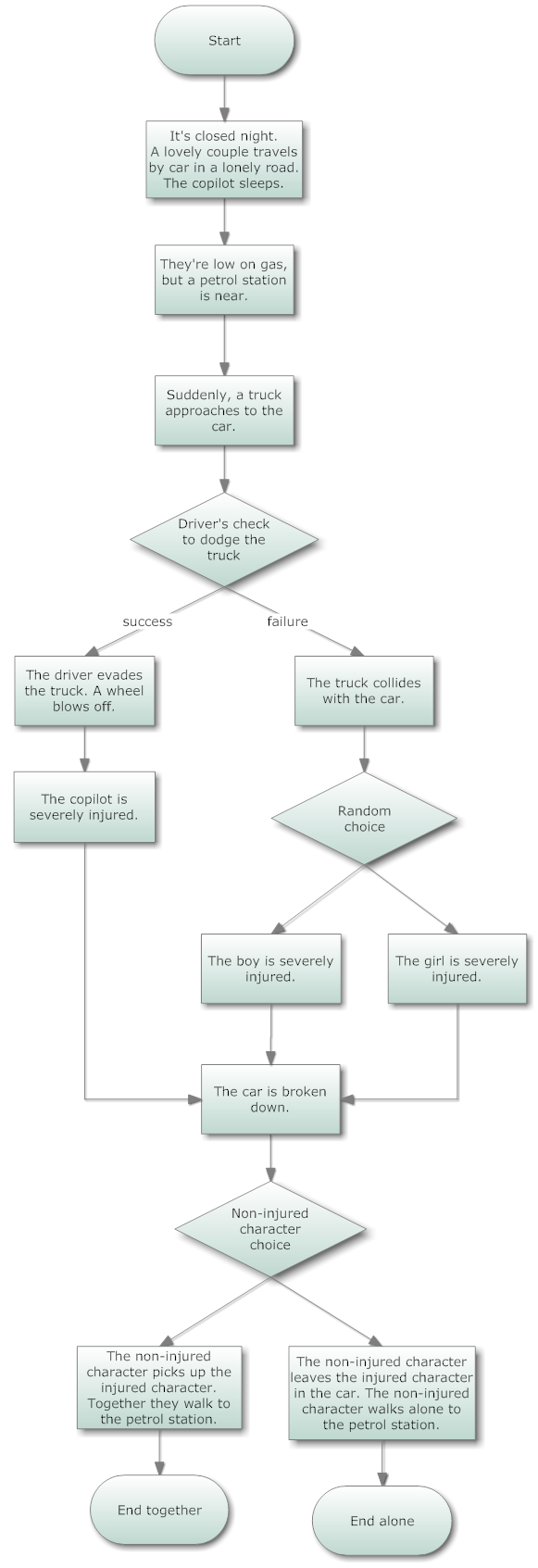Trending
Opinion: How will Project 2025 impact game developers?
The Heritage Foundation's manifesto for the possible next administration could do great harm to many, including large portions of the game development community.
Flowcharts can be used to diagram story structures. Flowcharts are simple to diagram and easy to understand. Flowcharts help you visualizing your story and finding errors in the story structure from early stages of development.

I was writinga story for a 2 player horror game, and I end up with something like this:

Linear Story Example
Figure 1: Linear story example.
It’s only a fragment. But it’s still interesting. It follows the typical linear story structure. All characters are hard-coded. There’s no variation, no choice, no interaction. Basically it’s a movie.
Of course, I can do it better. First I assume that players choose which character they play: the boy or the girl? Players also choose which character drives. Then we can add some challenges, player choices or random choices. And it looks like this:

Interactive Story Example
Figure 2: Interactive story example.
It seems more like a game story. Players can choose their story path and the story remains always under control.
Now let’s draw some interesting conclusions.
First, we can diagram stories using flowcharts. Flowcharts are simple to diagram and easy to understand. So you can draw flowcharts in your favorite editing program and show them to your development team as a story schema. Flowcharts are useful to visualize a game story structure, so you can precisely communicate your story to the development team. Also you can find errors in the story structure from early stages of development.
Additionally, we can obtain a story Domain-Specific Language (DSL) adapting flowcharts to storytelling. In a flowchart diagram there’re some basic types of nodes: start/end nodes, process nodes and decision nodes. In a story flowchart we have: story start/end nodes, story exposition nodes and story choices.
Story start/end nodes represent the beginning or the end of a story.
Story exposition nodes represent any story fragment conveyed to the players.
Story choices represent any story decision. they can be of three types:
Challenges are story choices that are based on player performance overcoming a conflict. Challenge choices always transition to failure or success story exposition nodes.
Player choices are story choices based on the player will. The player chooses what to do.
Random choices are story choices based on randomness or luck.
Note that figure 2 tries to illustrate all story primitives using flowchart visual notation. So we can specify a game story structure with a very simple diagram. Isn't it great?
Read more about:
BlogsYou May Also Like